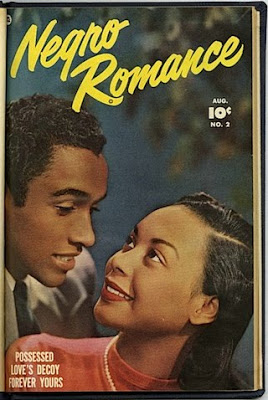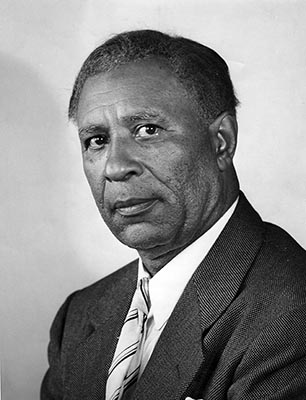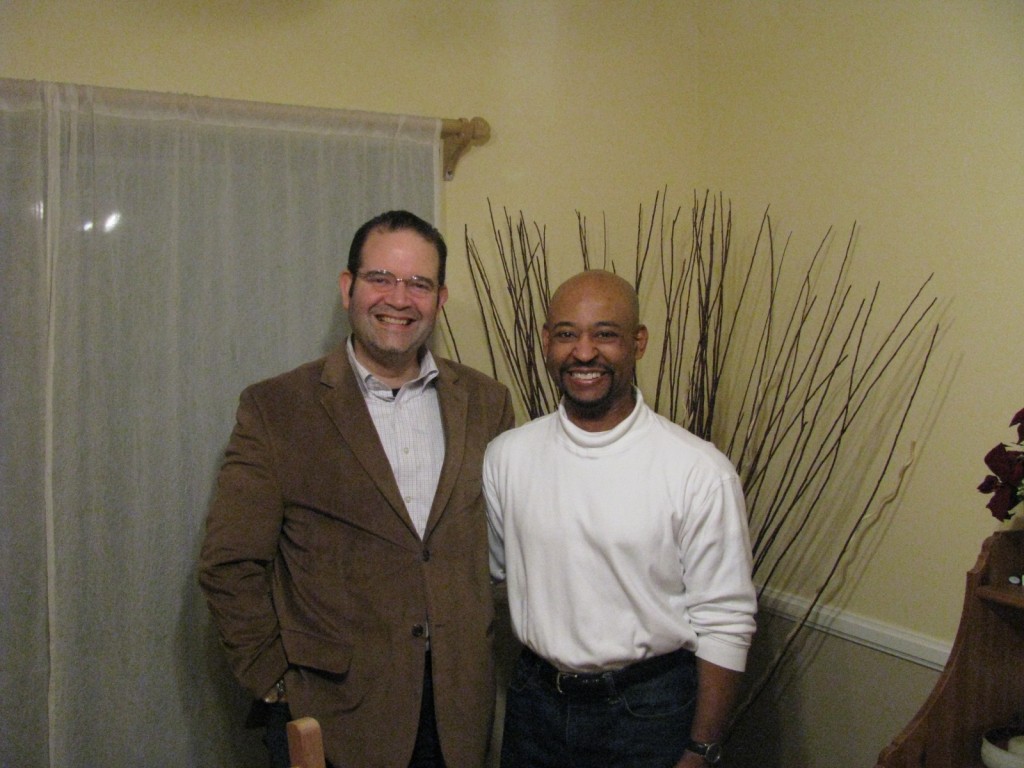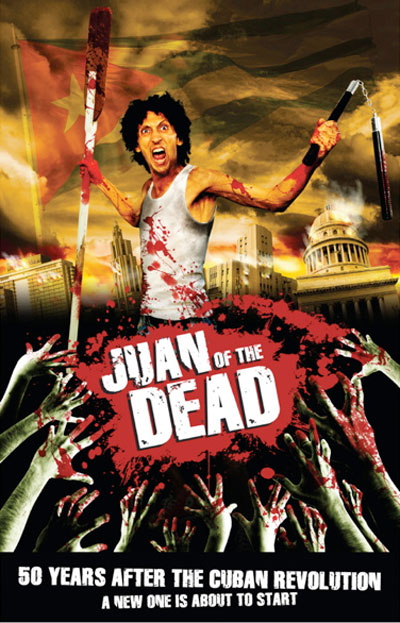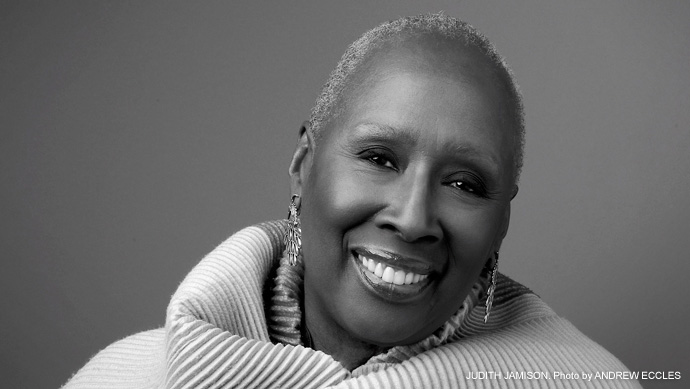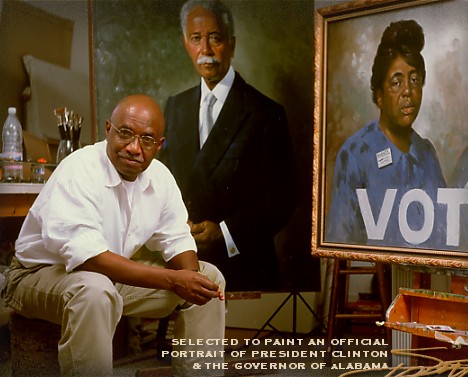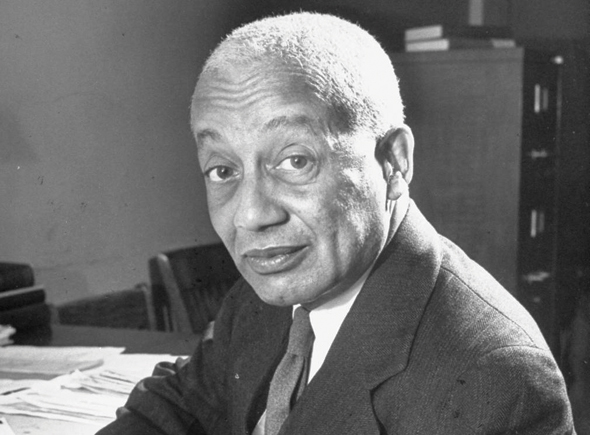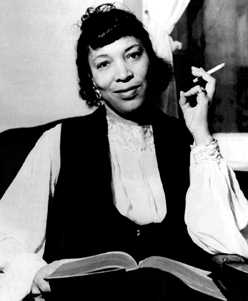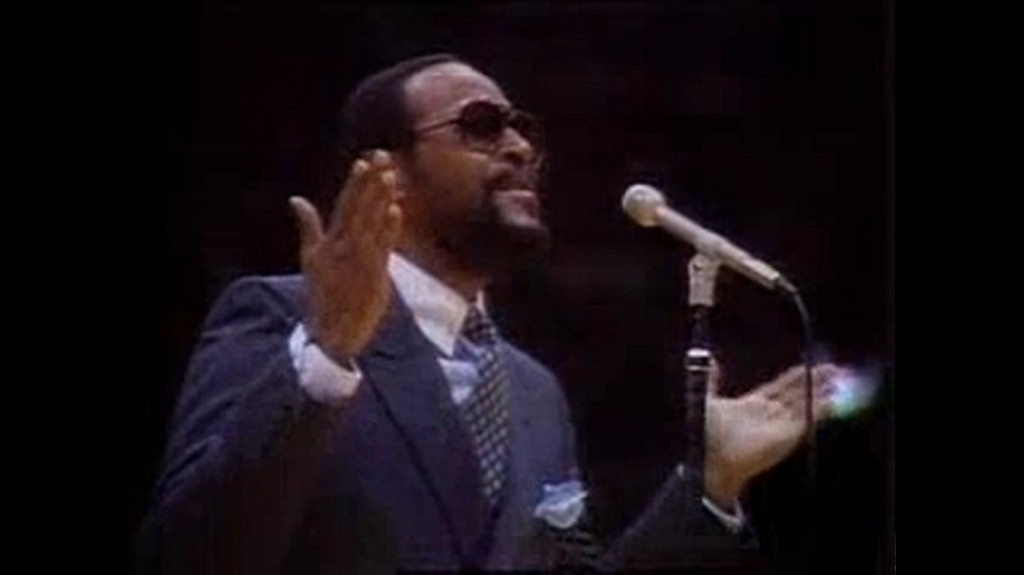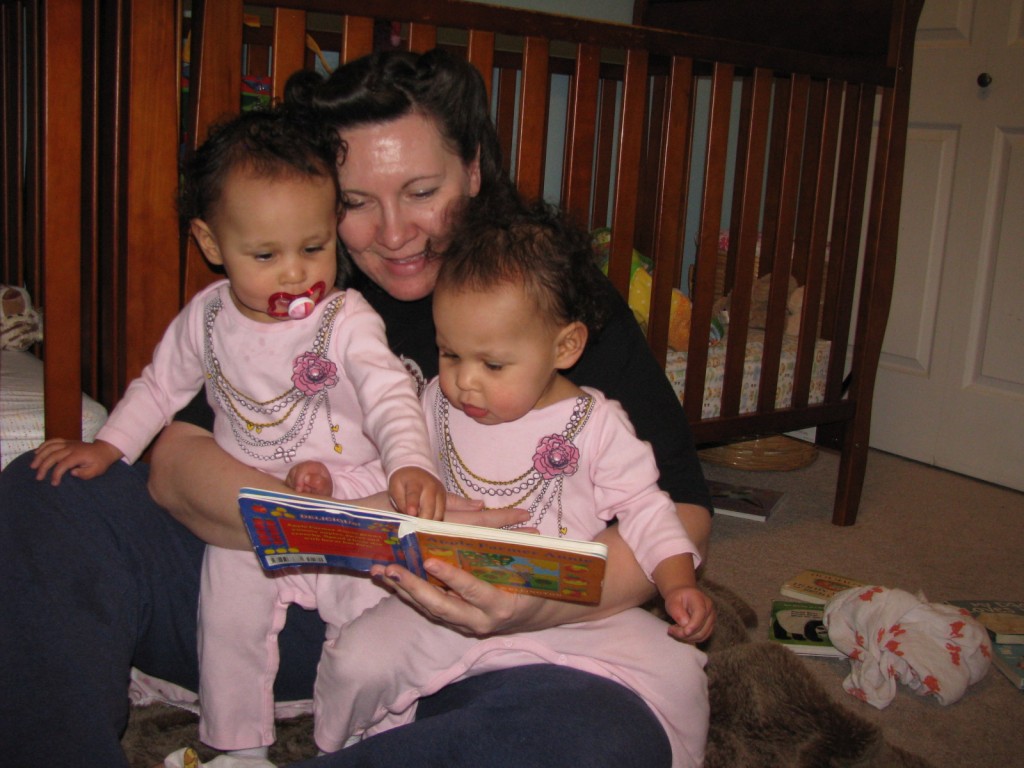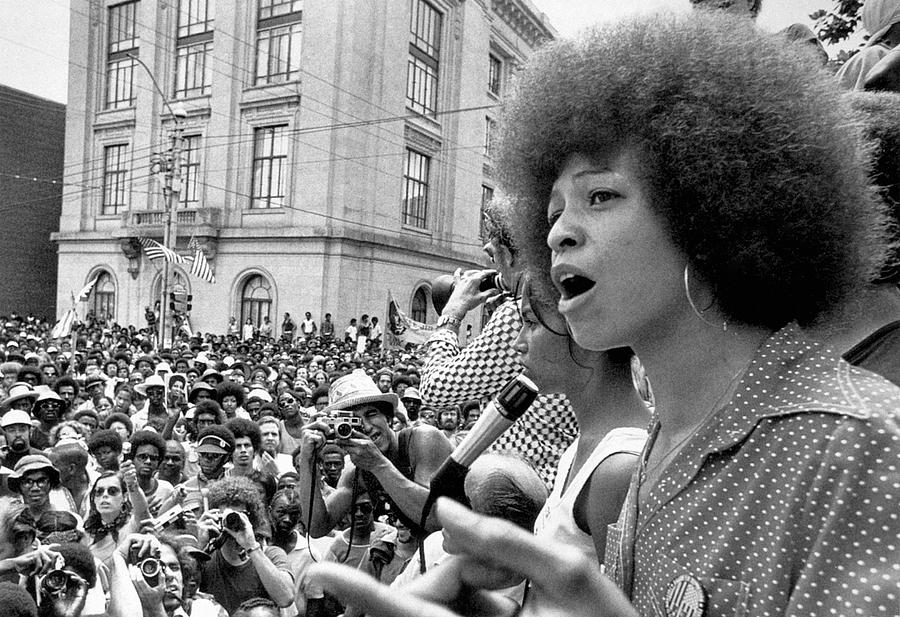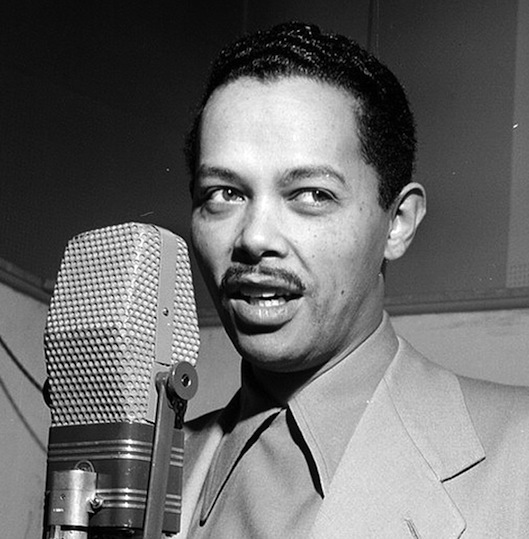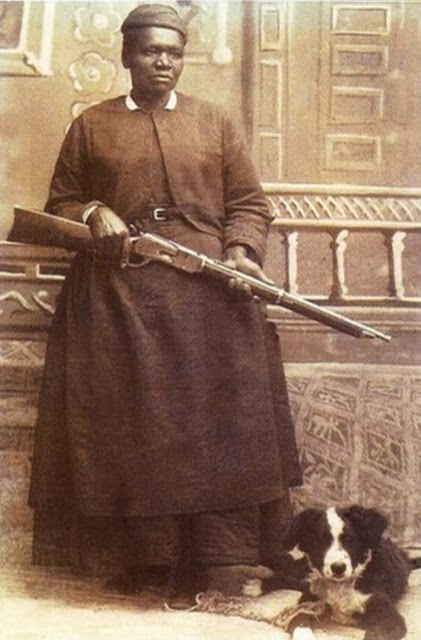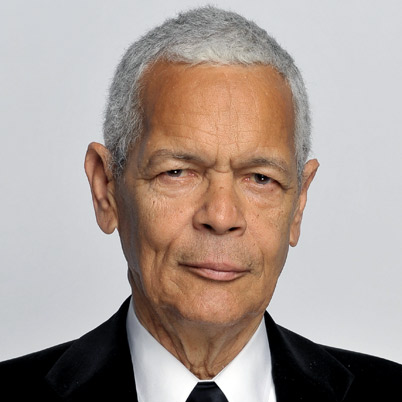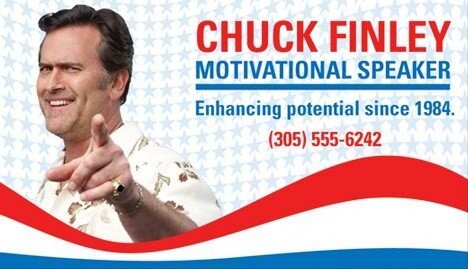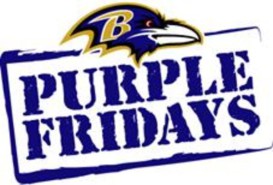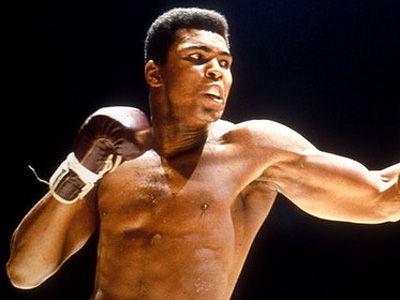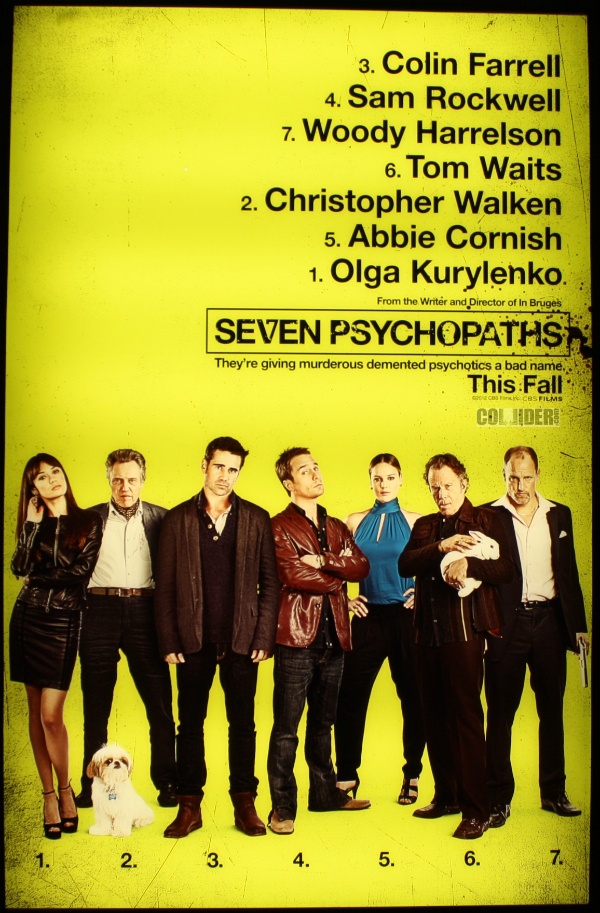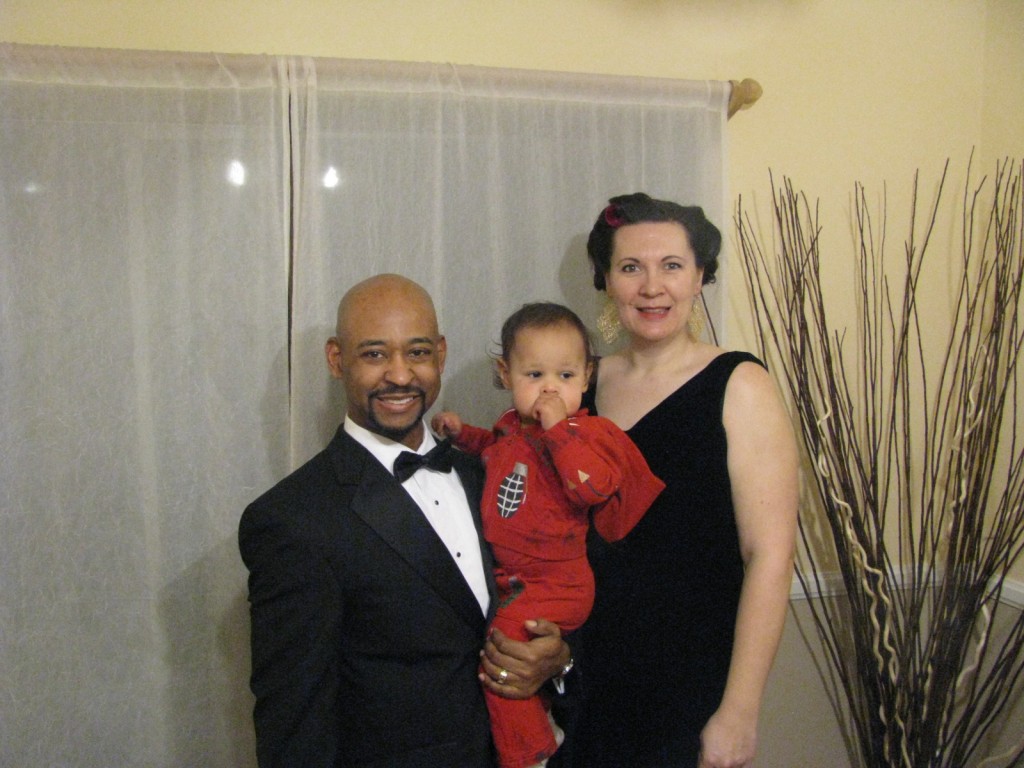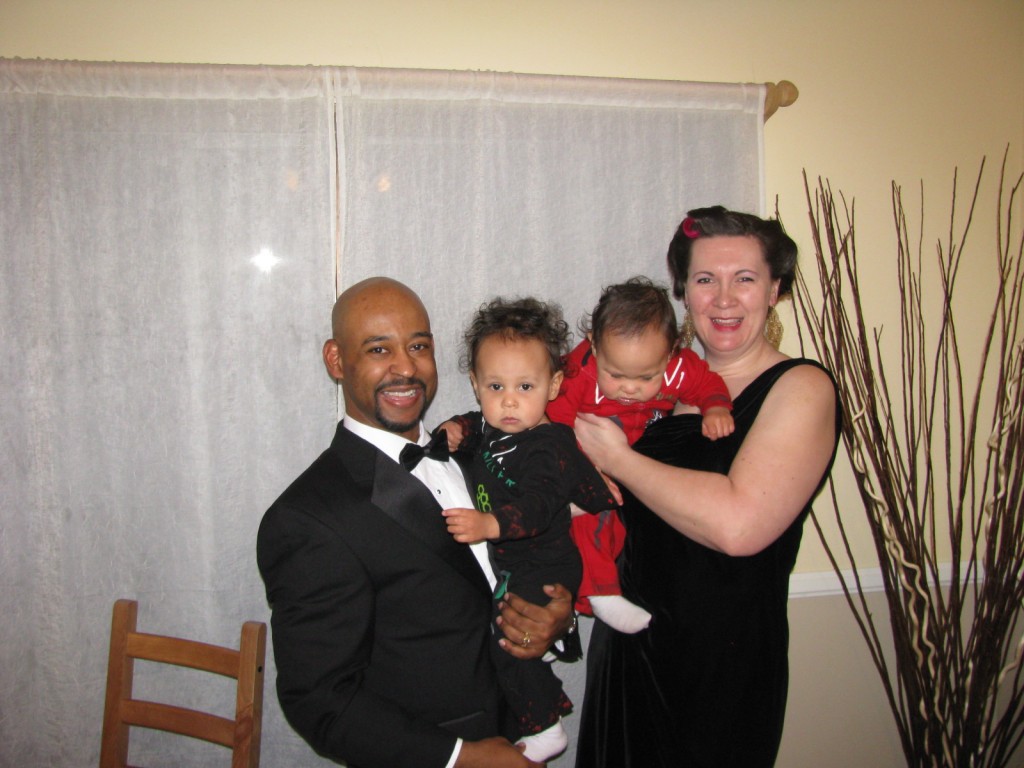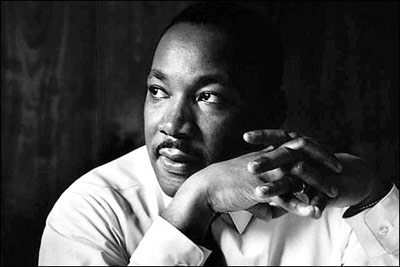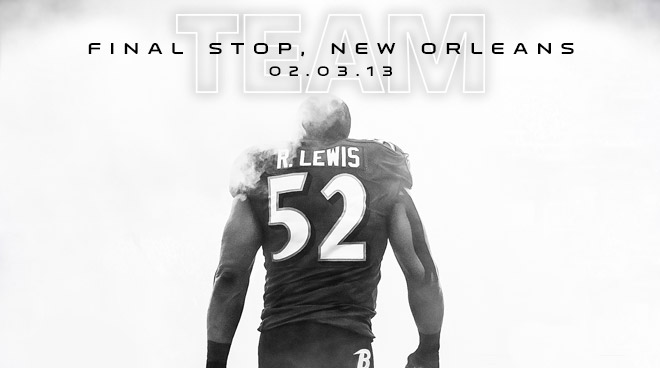“Good evening, ladies and gentlemen…”
boxing, business and economy, comics and animation, computers, education, everyday glory, food for thought, geekery, health, history, IKEA, movies and TV, music, people, politics and law, space, sports, style and fashion, the world, travel No Comments »Tuesday – 19 February 2013
It’s been a busy past few days around here. But, they’ve also been good days on the whole, so, like the one-legged man: I can’t kick.
Saturday, I had the pleasure of going to work to kick a server back into… um… service. It had decided to go belly-up around mid-morning and needed something just this side of percussive maintenance to get it back in gear. The rest of Saturday was, thankfully uneventful. Sunday, Sara!, Team DiVa and I went out for brunch and a trip to The Garden of Sweden. (We went for ONE THING… and left with about eight or nine things. None of which were the one we were after.) Monday, we took the girls for their first trip to Utah’s Hogle Zoo:
The trip was a BIG hit. The girls went nuts for the elephants, although seeing the giraffes was a little disconcerting for Vanessa. By the time we were done, they didn’t want to leave, despite the fact that it was lunch time AND the fact that they didn’t have morning naps. There were parts of the zoo that were closed for construction, but that didn’t stop us from seeing a good number of animals. And the girls kept demanding “More! More!” I can see many more trips to the zoo in the not-distant future.
Chew on This – Food for Thought: Black History Month
Once again, playing catch-up for the days I’ve missed. There’s a lot of information here, so let’s get to it:
- Eleanor Holmes Norton – Civil rights activist, politician
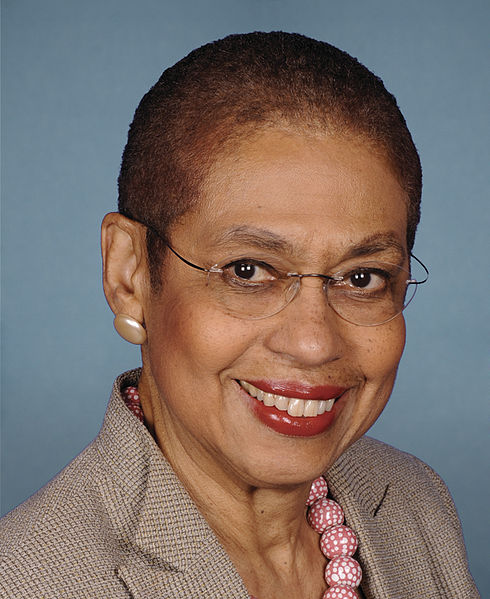
Born June 13, 1937 in Washington, D.C. A graduate of Antioch College, Yale University and Yale University Law School, Norton worked in private practice before becoming assistant director of the American Civil Liberties Union (1965–70) where she defended both Julian Bond‘s and George Wallace‘s freedom-of-speech rights.As Chairman of the New York Human Rights Commission (1970–7), Norton championed women’s rights and anti-block-busting legislation. She then went to Washington to chair the Equal Employment Opportunities Commission (1977–83), and in 1982 became a law professor at Georgetown University.In 1990, Norton was elected as a Democratic non-voting delegate to the House from the District of Columbia. Currently under scrutiny, the DC Fair and Equal House Voting Rights Act (or DC Vote) would give one vote to the District of Columbia in the House of Representatives, but not the Senate. Norton is a regular panelist on the PBS women’s news program To the Contrary. - Floyd Patterson – Boxer
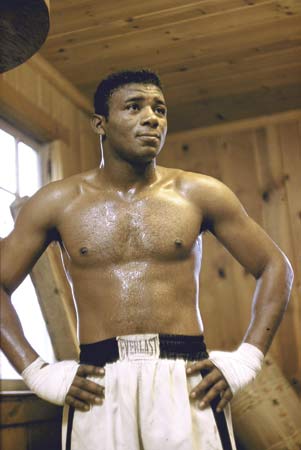 Floyd Patterson (January 4, 1935 – May 11, 2006) was an American professional boxer and former Undisputed Heavyweight Champion. At 21, Patterson became the youngest man to win the world heavyweight title. He was also the first heavyweight boxer to regain the title. He had a record of 55 wins, 8 losses and 1 draw, with 40 wins by knockout. He won the gold medal at the 1952 Olympic Games as a middleweight.Born into a poor family in Waco, North Carolina, Patterson was the youngest of eleven children and experienced an insular and troubled childhood. His family moved to Brooklyn, New York, where Floyd was a truant and petty thief. At age ten, he was sent to the Wiltwyck School for Boys, a reform school in upstate New York, which he credited with turning his life around. He stayed there for almost 2 years. He attended high school in New Paltz, NY where he succeeded in all sports.(to this day the New Paltz football field is named in his honor) At age fourteen, he started to box, trained by Cus D’Amato at his Gramercy Gym.
Floyd Patterson (January 4, 1935 – May 11, 2006) was an American professional boxer and former Undisputed Heavyweight Champion. At 21, Patterson became the youngest man to win the world heavyweight title. He was also the first heavyweight boxer to regain the title. He had a record of 55 wins, 8 losses and 1 draw, with 40 wins by knockout. He won the gold medal at the 1952 Olympic Games as a middleweight.Born into a poor family in Waco, North Carolina, Patterson was the youngest of eleven children and experienced an insular and troubled childhood. His family moved to Brooklyn, New York, where Floyd was a truant and petty thief. At age ten, he was sent to the Wiltwyck School for Boys, a reform school in upstate New York, which he credited with turning his life around. He stayed there for almost 2 years. He attended high school in New Paltz, NY where he succeeded in all sports.(to this day the New Paltz football field is named in his honor) At age fourteen, he started to box, trained by Cus D’Amato at his Gramercy Gym.
Aged just 17, Patterson won the Gold medal in the 1952 Helsinki Olympics as a middleweight. 1952 turned out to be a good year for the young Patterson; in addition to Olympic gold Patterson won the National Amateur Middleweight Championship and New York Golden Gloves Middleweight Championship. Patterson turned pro and steadily rose through the ranks, his only early defeat being an eight-round decision to former Light Heavyweight Champion Joey Maxim on June 7, 1954, at the Eastern Parkway Arena in Brooklyn, New York. Most people think Patterson did enough to win, and Maxim’s greater fame at the time helped to sway the judges.
Although Patterson fought around the light heavyweight limit for much of his early career, he and manager Cus D’Amato always had plans to fight for the Heavyweight Championship. In fact, D’Amato made these plans clear as early as 1954, when he told the press that Patterson was aiming for the heavyweight title. However, after Rocky Marciano announced his retirement as World Heavyweight Champion on April 27, 1956, Patterson was ranked by The Ring magazine as the top light heavyweight contender. After Marciano’s announcement, Jim Norris of the International Boxing Club stated that Patterson was one of the six fighters who would take part in an elimination tournament to crown Marciano’s successor. The Ring then moved Patterson into the heavyweight rankings, at number five.
Following a series of defeats, Patterson went through a depression. However, he eventually recovered and began winning fights again, including top victories over Eddie Machen and George Chuvalo. Patterson was now the number one challenger for the title held by Muhammad Ali. On November 22, 1965, in yet another attempt to be the first to win the World Heavyweight title three times, Patterson lost by technical knockout at the end of the 12th round, going into the fight with an injured sacro-iliac joint in a bout in which Ali was clearly dominant. Ali called Patterson an “Uncle Tom” for refusing to call him Muhammad Ali (Patterson continued to call him Cassius Clay) and for this outspokenness against black Muslims. Instead of scoring a quick knockout, Ali mocked, humiliated and punished Patterson throughout the fight.
Patterson was still a legitimate contender. In 1966 he traveled to England and knocked out British boxer Henry Cooper in just four rounds at Wembley Stadium. In comparison, Ali never scored a knockdown against Cooper in their two bouts and was nearly knocked out by Cooper in their first fight after he was knocked down near the end of the fourth round, but recovered after his corner used smelling salts on him (which was against British rules) at the end of that round. Ali would go on to score a TKO over Cooper after Cooper was severely cut in the fifth round.
In September 1969 he divorced his first wife, Sandra Hicks Patterson, who wanted him to quit boxing, while he still had hopes for another title shot.
When Ali was stripped of his title for refusing induction into the military, the World Boxing Association staged an eight-man tournament to determine his successor. Patterson fought Jerry Quarry to a draw in 1967. In a rematch four months later, Patterson lost a controversial 12-round decision to Quarry. Subsequently, in a third and final attempt at winning the title a third time, Patterson lost a controversial 15-round referee’s decision to Jimmy Ellis in Sweden, despite breaking Ellis’ nose and scoring a disputed knockdown.
Patterson continued on, defeating Oscar Bonavena in a close fight over ten rounds in early 1972.
At age 37, Patterson was stopped in the seventh round in a rematch with Muhammad Ali for the NABF Heavyweight title on September 20, 1972. The defeat proved to be Patterson’s last fight, although there was never an announcement of retirement.
Floyd Patterson suffered from Alzheimer’s disease and prostate cancer and had been hospitalized for a week prior to his death. He died at home in New Paltz in 2006 at age 71.
- Queen Latifah – Actress, entrepreneur, music producer, rapper, singer

Queen Latifah was born Dana Elaine Owens on March 18, 1970, in Newark, New Jersey. The second child of Lance and Rita Owens, Latifah is best known for her social politics, acting skills and gift for rhyme. When she was 8 years old, a Muslim cousin gave her the nickname Latifah, meaning “delicate and sensitive” in Arabic. Latifah began singing in the choir of Shiloh Baptist Church in Bloomfield, New Jersey, and had her first public performance when she sang a version of “Home” as one of the two Dorothys in a production of The Wizard of Oz at St. Anne’s parochial school.
In her first year of high school, Latifah began informal singing and rapping in the restrooms and locker rooms. In her junior year, she formed a rap group, Ladies Fresh, with her friends Tangy B and Landy D in response to the formation of another young women’s group. Soon the group was making appearances wherever they could. Latifah’s mother was a catalyst; she was in touch with the students and the music. She invited Mark James, a local disc jockey known as D.J. Mark the 45 King, to appear at a school dance. The basement of James’s parents’ house in East Orange, which was equipped with electronic and recording equipment, became the hangout of Latifah and her friends. They began to call themselves “Flavor Unit.”James was beginning a career as a producer and made a demo record of Queen Latifah’s rap Princess of the Posse. He gave the demo to the host of Yo! MTV Raps, Fred Braithwaite (professionally known as “Fab 5 Freddy“). The recording captured the attention of Tommy Boy Music employee Dante Ross, who immediately signed Latifah, and in 1988 issued her first single, “Wrath of My Madness.” The track met with a positive response and afforded her the opportunity to launch a European tour, and to perform at the Harlem’s famed Apollo Theater. The next year Latifah released her first album, All Hail to the Queen, which went on to sell more than 1 million copies.As she began to earn money, Latifah displayed an interest in investment, putting money into a delicatessen and a video store on the ground floor of the apartment in which she was living. She came to realize that she had a knack for business, and realized that there was an opening for her in record production. In 1991, Latifah organized and became chief executive officer of the Flavor Unit Records and Management Company, headquartered in Jersey City, New Jersey. By late 1993, the company had signed 17 rap groups, including the very successful Naughty by Nature. In 1993, Latifah recorded a jazz- and reggae-influenced album titled Black Reign. While the album sold more than 500,000 copies, the single “U.N.I.T.Y.” earned Latifah her first Grammy Award in 1995.
In the 1990s, Latifah branched out into acting. She made her big screen debut in Spike Lee’s interracial romance drama Jungle Fever (1991). The following year, Latifah appeared in the crime thriller Juice with Omar Epps and Tupac Shakur. She soon landed a leading role on the small screen, appearing in the sitcom Living Single from 1993 to ’98. The comedy, which also starred Kim Coles, Kim Fields and Erika Alexander, proved to be a ground-breaking show. It remains one of the few sitcoms to focus on a group of African-American women.
A talented performer, Latifah continued to tackle both comedic and dramatic parts. She co-starred in 1996’s Set It Off with Jada Pinkett Smith and Vivica A. Fox, playing as a lesbian bank robber. Two years later, Latifah teamed up with Holly Hunter and Danny DeVito for the comedy Living Out Loud (1998). She also appeared withDenzel Washington and Angelina Jolie in The Bone Collector.
Perhaps Latifah’s most acclaimed film role to date came in the 2002 hit musical Chicago, starring Richard Gere, Catherine Zeta-Jonesand Renee Zellweger. Her portrayal of prison matron Mama Morton gave her a chance to show off both her singing talents and acting skills. For her work in the film, Latifah earned an Academy Award nomination for best supporting actress. She lost to Chicago co-star Catherine Zeta-Jones.
Latifah went on to receive strong reviews for 2003’s romantic comedy Bringing Down the House co-starring with Steve Martin. The following year, she experienced some disappointment withTaxi, which co-starred Jimmy Fallon. The comedy proved to be a critical and commercial dud. She fared better with Beauty Shop(2005) and her voice-over work in the hit animated film Ice Age: The Meltdown (2006).
In 2007, Queen Latifah again delighted movie-goers with her musical talents. She appeared as Motormouth Maybelle in Hairspraywith John Travolta. Her crime caper Mad Money (2008) with Diane Keaton and Katie Holmes received much colder reception. Returning to drama, Latifah gave a strong performance in The Secret Life of Bees (2008).
On the small screen, Latifah has made a number of guest television appearances over the years, including on the shows 30 Rock and Single Ladies. She also co-starred in the 2012 TV remake of Steel Magnolias with Alfre Woodard, Phylicia Rashad and Jill Scott. Latifah branched out in a new direction the following year. She will enter the daytime television market with a new talk show. The Queen Latifah Show will debut in the fall of 2013. The program promises to be a mix of interviews and comedic and musical performances, according to BET.com.
In addition to acting, Queen Latifah serves as a spokesperson for CoverGirl cosmetics. She even has her own line with the company: The Queen Collection.
- Diana Ross – Actress, singer
Diana Ross was born in Detroit, Michigan on March 26, 1944. The second-eldest child of Ernestine (née Moten) (January 27, 1916 – October 9, 1984), a schoolteacher, and Fred Ross, Sr. (July 4, 1920 – November 21, 2007), a former United States Army soldier, Ross would later say that she didn’t see much of her father until he had returned from service following World War II.
Ross and her family originally lived at Belmont Road in the North End section of Detroit, near Highland Park, Michigan, where she was neighbors with Smokey Robinson, who first met Ross when she was eight. Despite her early life as a “tomboy”, upon her teenage years, Ross had dreams of being a fashion designer. She studied design, millinery, pattern-making and seamstress skills while attending Cass Technical High School, a four-year college preparatory magnet school, in downtown Detroit. In her late teens, Ross worked at Hudson’s Department Store where, it was claimed in biographies, that she was the first black employee “allowed outside the kitchen”. Ross graduated in January 1962, one semester earlier than her classmates. Around this same time, Ross was turned on by the emerging rock and roll music scene, and her early influences included Frankie Lymon and Etta James.
At fifteen, Ross was brought to the attention of music impresario Milton Jenkins, manager of the local doo-wop group the Primes, by Mary Wilson. Paul Williams, then member of The Primes, convinced Jenkins to include Ross in the Primettes, considered a “sister group” of the Primes. Ross was part of a lineup that included Wilson,Florence Ballard and Betty McGlown, who completed the lineup. In 1960, following their win at a singing contest in Windsor, Ontario, Canada, the group auditioned for a spot on Motown Records after Smokey Robinson introduced the young group to Berry Gordy. Upon learning of their ages, Gordy advised them to come back after graduation. Undeterred, the quartet stayed around Motown’s Hitsville U.S.A. headquarters, offering to provide extra help for Motown’s recordings, often including hand-claps and background vocals.
In January 1961, Berry Gordy agreed to sign the young act under the condition they change their name. Each member picked out various names from friends. Eventually they settled on The Supremes, though Ross initially had apprehensions toward the name – she felt the name would mistake them for a male vocal group. But Gordy agreed with the new name and signed them on January 15 of that year. During the group’s early years, there was no designated lead vocalist for the group as they had agreed to split lead vocals between their choice of song material; Ross favoring the uptempo pop songs. That changed in 1963 when Gordy assigned Ross, who had already sung lead on the majority of their early singles, as the main lead vocalist, considering that her vocals had potential to reach Gordy’s dreams of crossover success. Between August 1964 and May 1967, Ross, Wilson and Ballard sang on ten number-one hit singles, all of which also made the UK top forty. The group had also become a hit with audiences both domestically and abroad, going on to become Motown’s most successful vocal act throughout the sixties.In 1968, Ross started performing as a solo artist mainly on television specials, including The Supremes’ own specials such as TCB and G.I.T. on Broadway. In mid-1969, Gordy decided to have Ross leave the group by the end of the year and Ross began sessions for her own solo work that July. One of the first plans for Ross to establish her own solo career was to bring in a new Motown recording act. Though she herself didn’t claim discovery, Motown pinned Ross as having discovered The Jackson 5. In November, Ross confirmed a split from the Supremes on Billboard. Ross’ presumed first solo recording, “Someday We’ll Be Together”, was eventually released as a Supremes recording and became the group’s final number-one hit on the Hot 100. Ross made her final appearance with the Supremes at the Frontier Hotel in Las Vegas on January 14, 1970.
After her obligations with the Supremes were fulfilled, Ross signed a new contract as a solo artist in March 1970. Two months later, Motown released her eponymous solo debut, which included the hits, “Reach Out and Touch (Somebody’s Hand)” and “Ain’t No Mountain High Enough,” the latter song becoming her first number-one single as a solo artist on the pop and R&B charts, also becoming an international hit reaching the UK top ten, and winning Ross her first Grammy nomination. Ross only released one solo recording in 1972. She reemerged in 1973 with “Touch Me in the Morning,” which became her first single to reach number-one in three years. The album of the same name became Ross’s first non-soundtrack studio album to reach the top ten, peaking at #5. Later that year, the Diana & Marvin album, her duet album with Gaye, was released, and spawned five hit singles, including three released in the United States and two in Europe, gaining an international hit with their cover of The Stylistics’ “You Are Everything.” In 1973, Ross began giving out concerts overseas where she immediately sold out at every concert venue she performed at. That year, Ross became the first entertainer in Japan’s history to receive an invitation to the Imperial Palace for a private audience with the Empress Nagako, wife of Emperor Hirohito.
Ross’s follow-up albums, 1977’s Baby It’s Me and 1978’s Ross, however, both faltered on the charts, mainly due to lack of promotion and a period of growing tension between Ross and Gordy, stemming from an incident in 1975 after Ross struck him after the two engaged in an argument on the set of Ross’s film, Mahogany. In 1977, Ross starred in her own one-woman show at Broadway, titled An Evening with Diana Ross. Her performance later resulted in her winning a Tony Award.
After catching the group Chic at a concert where she attended with her daughters, Ross advised to the leaders of the band, Nile Rodgers and Bernard Edwards to work with them in New York on her next album. They agreed and, in 1980, Ross released the Diana album. The album became her highest-charting solo album and her most successful, featuring hits including the number-one hit, “Upside Down,” her first song to reach the top position in four years. Another song, “I’m Coming Out,” became equally successful; its hook would later be sampled for “Mo’ Money, Mo’ Problems.” Diana would become Ross’s final studio album under her Motown contract. She would later work on four songs to complete her contractual obligations for the compilation album, To Love Again, which would be released in May 1981. Though Ross had sought to leave Motown in 1980 shortly after the release of Diana, she discovered, just as she was planning to leave Motown, that she only had up to $150,000 in her name despite helping Motown to earn millions of dollars with her recordings in the twenty years she had been signed to the label. Ross signed with RCA on May 20, 1981, and her $20 million deal in 1981 became then the most lucrative contract of any recording artist at the time. After leaving, Ross achieved her sixth and final number-one hit with Lionel Richie on the ballad “Endless Love” around the same time Ross left the label.
In 1971, Diana Ross began working on her first film, Lady Sings the Blues, which was a loosely based biography on music legend Billie Holiday. Some critics lambasted the idea of the singer playing Holiday considering how “miles apart” their styles were. At one point, Ross began talking with several of Holiday’s acquaintances and listened to her recordings to get into character. During an audition to acquire the role, Ross would act on cue to the film’s producers’s commands, helping Ross to win her part. When Berry Gordy heard Ross perform covers of Holiday’s material, he felt Ross had put “a little too much” Holiday in her vocal range, advising Ross to “put a little Diana back into it.”
Ross also talked with doctors at drug clinics in research of the film, as Holiday had been a known drug addict. Ross would later make a crucial decision when it came to interpreting Holiday’s music: instead of flatly imitating Holiday, she only focused on Holiday’s vocal phrasing. “Lady Sings the Blues” opened in theaters in October 1972, becoming a major success in Ross’s career. Ross’s role in the film won her Golden Globe Award and Academy Award nominations for Best Actress. Alongside Cicely Tyson, who was nominated for her role in the film, Sounder, they were the first Black actresses to be nominated for the Academy Award for Best Actress since Dorothy Dandridge. The soundtrack to “Lady Sings the Blues” became just as successful, reaching #1 on the Billboard 200 staying there for two weeks and breaking then-industry records by shipping 300,000 copies during the first eight days of its release. At nearly two million in sales, it is one of Ross’s best-selling albums to date.
After the film, Ross returned to her music career, reemerging with another film in 1975 with Mahogany, her second film, in which she starred alongside Billy Dee Williams and whose costumes she designed. The story of an aspiring fashion designer who becomes a runway model and the toast of the industry, Mahogany was a troubled production from its inception. The film’s original director, Tony Richardson, was fired during production, and Berry Gordy assumed the director’s chair himself. In addition, Gordy and Ross clashed during filming, with Ross leaving the production before shooting was completed, forcing Gordy to use secretary Edna Anderson as a body double for Ross. While a box office success, the film was not well received by the critics: Time magazine’s review of the film chastised Gordy for “squandering one of America’s most natural resources: Diana Ross.”
In 1977, Motown acquired the film rights to the Broadway play The Wiz, an African-American reinterpretation of L. Frank Baum’s The Wonderful Wizard of Oz. The film initially was to include the stage actors who had performed on the play. However, the role of Dorothy, which had been performed onstage by Stephanie Mills, would be given to Ross after she convinced film producer Rob Cohen to cast her in the role of Dorothy. This decision eventually led to a change in the film’s script in which Dorothy went from a schoolgirl to a schoolteacher. The role of the Scarecrow, also performed by someone else onstage, was eventually given to Ross’s former Motown label mate, Michael Jackson. The film adaptation of The Wiz had been a $24 million production, but upon its October 1978 release, it earned only $21,049,053 at the box office. Though pre-release television broadcast rights had been sold to CBS for over $10 million, the film produced a net loss of $10.4 million for Motown and Universal. At the time, it was the most expensive film musical ever made. The film’s failure ended Ross’s short career on the big screen and contributed to the Hollywood studios’s reluctance to produce the all-black film projects which had become popular during the blaxploitation era of the early to mid-1970s for several years. The Wiz was Ross’s final film for Motown.
Ross had success with movie-themed songs. While her version of Holiday’s “Good Morning Heartache” only performed modestly well in early 1973, her recording of “Theme from Mahogany (Do You Know Where You’re Going To)” gave Ross her third number-one hit, in late 1975. Three years later, Ross and Michael Jackson had a modest dance hit with their recording of “Ease on Down the Road.” Their second duet, actually as part of the ensemble of The Wiz, “Brand New Day,” found some success overseas. Ross scored a Top 10 hit in late 1980 with the theme song to the 1980 film It’s My Turn. The following year, she collaborated with former Commodores singer-songwriter Lionel Richie on the theme song for the film Endless Love. The Academy Award-nominated title single became her final hit on Motown Records, and the number one record of the year. Several years later, in 1988, Ross recorded the theme song to The Land Before Time. “If We Hold On Together” became an international hit, reaching number-one in Japan.
In 1984, Ross’s career spiked yet again with the release of the million-selling Swept Away. This featured a duet with Julio Iglesias, “All Of You,” which was featured on both the albums they had then released—his 1100 Bel Air Place as well as her Swept Away. It and the title selection both became international hits, as did the chart-topping ballad, “Missing You,” which was a tribute to Marvin Gaye, who had died earlier that year. Her 1985 album, Eaten Alive, found major success overseas with the title track and “Chain Reaction,” although neither of the songs became the best-sellers she was once accustomed to in America. Earlier in 1985, she appeared as part of the supergroup USA for Africa on the ‘”We Are the World“‘ charity single, which sold over 20 million copies worldwide. Ross’s 1987 follow up to Eaten Alive, Red Hot Rhythm & Blues, found less success than the prior album. In 1988, Ross chose to not renew her RCA contract. Around this same time, Ross had been in talks with her former mentor Berry Gordy to return to Motown. When she learned of Gordy’s plans to sell Motown, Ross tried advising him against the decision though he sold it to MCA Records in 1988. Following this decision, Gordy offered Ross a new contract to return to Motown with the condition that she have shares in the company as a part-owner. Ross accepted the offer.
Despite its heavy promotion, Diana’s next album, Workin’ Overtime, was a critical and commercial failure. Subsequent follow-ups such as The Force Behind the Power(1991), Take Me Higher (1995), and Every Day Is a New Day (1999) produced similarly disappointing sales. Ross had more success overseas with the albums than she did in America. In 1994, Ross performed at the opening ceremony of the FIFA World Cup, hosted in the USA. Her performance has become a running joke in football circles due to her obvious miming and for missing the goal from close range. On January 28, 1996, Ross performed the Halftime Show at Super Bowl XXX.
In 1999, she was named the most successful female singer in the history of the United Kingdom charts, based upon a tally of her career hits. Madonna would eventually succeed Ross as the most successful female artist in the UK.
In 2004, after spending several years away from the spotlight and after a stint in jail for committing a DUI, Ross returned to live touring, first in Europe and then in the United States all within the same year. In 2005, she participated in Rod Stewart‘s Thanks for the Memory: The Great American Songbook, Volume IV recording a duet version of the Gershwin standard, “I’ve Got a Crush on You“. The song was released as promotion for the album and later reached number 19 on the Billboard’s Hot Adult Contemporary chart, marking her first Billboard chart entry since 2000. Ross was featured in another hit duet, this time with Westlife, on a cover of Ross’ 1991 hit, “When You Tell Me You Love Me”, which repeated the same chart success of the original just fourteen years before.
In June 2006, Universal released Ross’ shelved 1972 Blue album. It peaked at #2 on Billboard’s jazz albums chart. Later in 2006, Ross released her first studio album in seven years with I Love You. It would be released on EMI/Manhattan Records in the United States in January 2007. EMI Inside later reported the album had sold more than 622,000 copies worldwide. Ross later ventured on a world tour to promote I Love You which garnered rave reviews. In 2007, she was honored twice, first with the Lifetime Achievement Award at the BET Awards and later was one of the honorees at the Kennedy Center Honors.
In 2010, Ross embarked on her first headlining tour in three years titled the More Today Than Yesterday: The Greatest Hits Tour. She dedicated the entire concert tour to her late friend, Michael Jackson, who died in June 2009. Ross has garnered critical success as well as commercial success from the now two-year tour. In February 2012, Diana Ross received her first ever Grammy Award, for Lifetime Achievement, and announced the nominees for the Album of the Year. In May, a DVD of Ross’ Central Park concert performances, “For One & For All”, was released and featured commentary from Steve Binder, who directed the special.
- Dred Scott – Civil rights activist
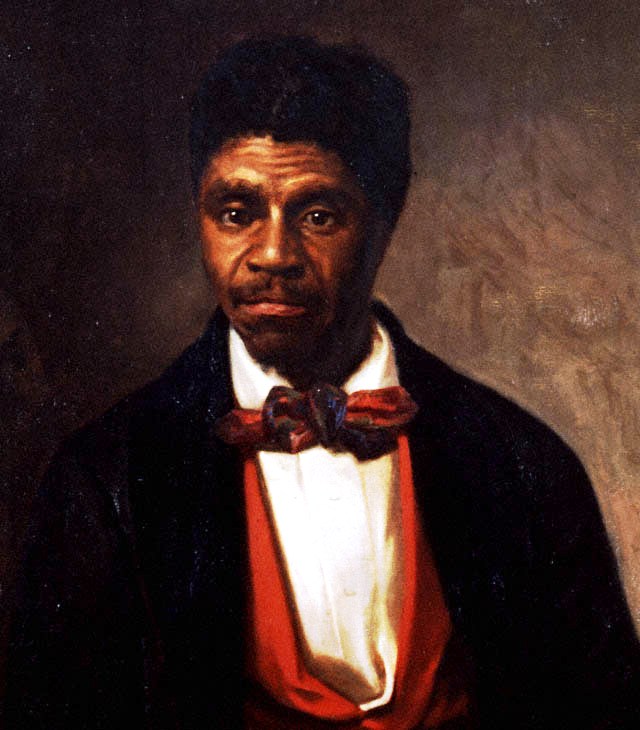 Dred Scott was born in sometime around the turn of the century, often fixed at 1795, in Southampton County, Virginia. Legend has it that his name was Sam, but when his elder brother died, he adopted his name instead. His parents were slaves, but it is uncertain whether the Blow family owned them at his birth or thereafter. Peter Blow and his family relocated first to Huntsville, Alabama, and then to St. Louis Missouri. After Peter Blow’s death, in the early 1830s, Scott was sold to a U.S. Army doctor, John Emerson.In 1836, Scott fell in love with a slave of another army doctor, 19-year-old Harriett Robinson, and her ownership was transferred over to Dr. Emerson when they were wed. In the ensuing years, Dr. Emerson traveled to Illinois and the Wisconsin Territories, both of which prohibited slavery. When Emerson died in 1846, Scott tried to buy freedom for himself and his family from Emerson’s widow, but she refused. Dred Scott made history by launching a legal battle to gain his freedom. That he had lived with Dr. Emerson in free territories become the basis for his case.
Dred Scott was born in sometime around the turn of the century, often fixed at 1795, in Southampton County, Virginia. Legend has it that his name was Sam, but when his elder brother died, he adopted his name instead. His parents were slaves, but it is uncertain whether the Blow family owned them at his birth or thereafter. Peter Blow and his family relocated first to Huntsville, Alabama, and then to St. Louis Missouri. After Peter Blow’s death, in the early 1830s, Scott was sold to a U.S. Army doctor, John Emerson.In 1836, Scott fell in love with a slave of another army doctor, 19-year-old Harriett Robinson, and her ownership was transferred over to Dr. Emerson when they were wed. In the ensuing years, Dr. Emerson traveled to Illinois and the Wisconsin Territories, both of which prohibited slavery. When Emerson died in 1846, Scott tried to buy freedom for himself and his family from Emerson’s widow, but she refused. Dred Scott made history by launching a legal battle to gain his freedom. That he had lived with Dr. Emerson in free territories become the basis for his case.
The process began in 1846: Scott lost in his initial suit in a local St. Louis district court, but he won in a second trial, only to have that decision overturned by the Missouri State Supreme Court. With support from local abolitionists, Scott filed another suit in federal court in 1854, against John Sanford, the widow Emerson’s brother and executor of his estate. When that case was decided in favor of Sanford, that Scott turned to the U.S. Supreme Court.
In December 1856, Abraham Lincoln delivered a speech, foreshadowing the Emancipation Proclamation of 1863, examining the constitutional implications of the Dred Scott Case.
On March 6, 1857, the Supreme Court decision in Dred Scott v. Sandford was issued, 11 long years after the initial suits. Seven of the nine judges agreed with the outcome delivered by Chief Justice Roger Taney, who announced that slaves were not citizens of the United States and therefore had no rights to sue in Federal courts: “… They had no rights which the white man was bound to respect.” The decision also declared that the Missouri Compromise (which had allowed Scott to sample freedom in Illinois and Wisconsin) was unconstitutional, and that Congress did not have the authority to prohibit slavery.
The Dred Scott decision sparked outrage in the northern states and glee in the south—the growing schism made civil war inevitable.
Too controversial to retain the Scotts as slaves after the trial, Mrs. Emerson remarried and returned Dred Scott and his family to the Blows who granted them their freedom in May 1857. That same month, Frederick Douglassdelivered a speech discussing the Dred Scott decision on the anniversary of the American Abolition Society.
Eventually, the 13th and 14th amendments to the Constitution overrode this Supreme Court ruling.
Stray Toasters
- Device Offers Partial Vision for the Blind
- The Geekerie
- Gym Class Isn’t Just Fun and Games Anymore
- Mutant Women of Earth: How Chris Claremont Reinvented the Female Superhero
- Patrick Was Leading Way Even Before Winning Pole
- World’s biggest: American, US Airways merge
- Street Style: Shop These Looks
- Following cyber order from Obama, CISPA is back
- Louis Gossett Jr. on Post-Oscar Heartbreak
- Russians Wade Into the Snow to Seek Treasure From the Sky
- Meteor injures hundreds in Russia (in case you missed it)
And, with that, what has to be the post with the longest gestation time comes to an end.
Namaste.






